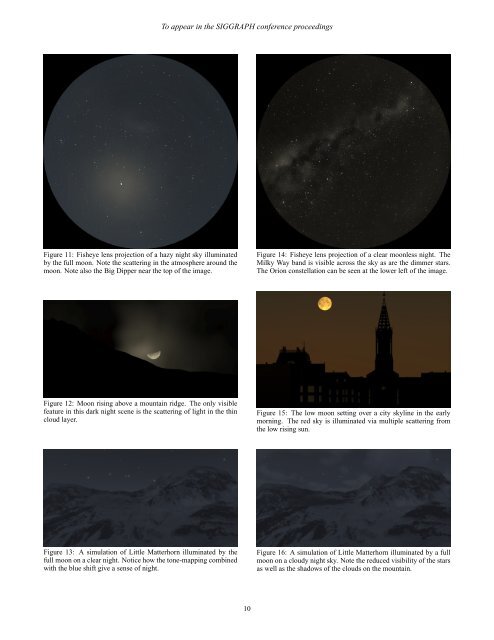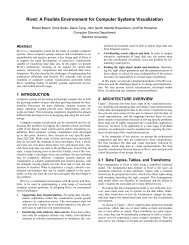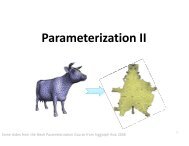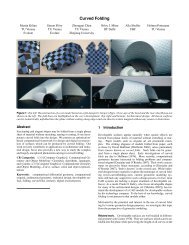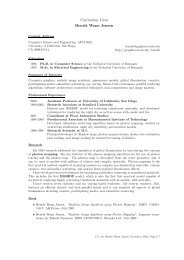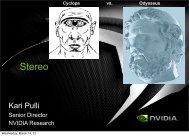A Physically-Based Night Sky Model - Computer Graphics Laboratory
A Physically-Based Night Sky Model - Computer Graphics Laboratory
A Physically-Based Night Sky Model - Computer Graphics Laboratory
Create successful ePaper yourself
Turn your PDF publications into a flip-book with our unique Google optimized e-Paper software.
Figure 11: Fisheye lens projection of a hazy night sky illuminated<br />
by the full moon. Note the scattering in the atmosphere around the<br />
moon. Note also the Big Dipper near the top of the image.<br />
Figure 12: Moon rising above a mountain ridge. The only visible<br />
feature in this dark night scene is the scattering of light in the thin<br />
cloud layer.<br />
Figure 13: A simulation of Little Matterhorn illuminated by the<br />
full moon on a clear night. Notice how the tone-mapping combined<br />
with the blue shift give a sense of night.<br />
To appear in the SIGGRAPH conference proceedings<br />
10<br />
Figure 14: Fisheye lens projection of a clear moonless night. The<br />
Milky Way band is visible across the sky as are the dimmer stars.<br />
The Orion constellation can be seen at the lower left of the image.<br />
Figure 15: The low moon setting over a city skyline in the early<br />
morning. The red sky is illuminated via multiple scattering from<br />
the low rising sun.<br />
Figure 16: A simulation of Little Matterhorn illuminated by a full<br />
moon on a cloudy night sky. Note the reduced visibility of the stars<br />
as well as the shadows of the clouds on the mountain.


